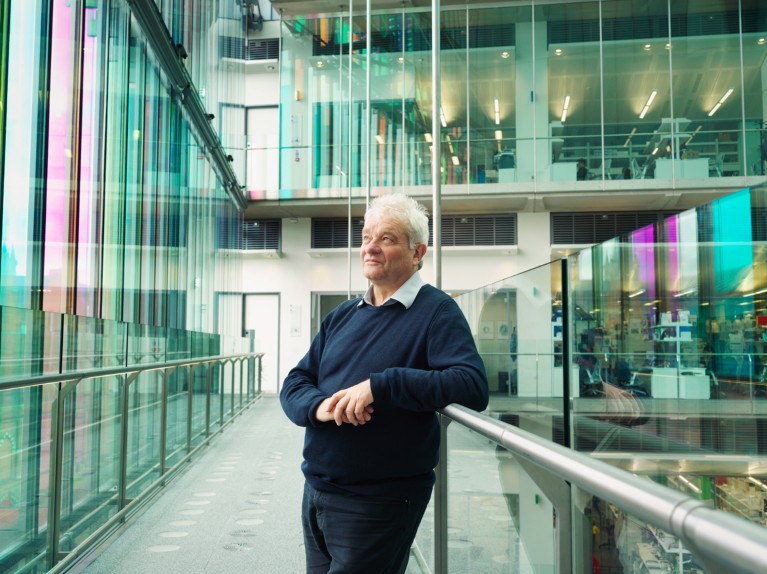I don’t like thinking alone. I like the bustle and energy of other people. So I do my thinking in a glass-covered, grand atrium with gigantic windows, where I’m surrounded by people. I like to be able to think and write, then look up and see people talking, thinking and writing. We’re all trying to wrestle with some problem.
I oversee everything that happens at the Francis Crick Institute: from our discovery research to our engagement with schools, the local community and the public.
I work with colleagues to develop the Crick’s strategy for delivering high-quality research that unlocks deeper understanding of the biology underlying human health and disease. That strategy includes bringing in the best scientific talent, and supporting the UK biomedical research endeavour.
The Crick is a grand building shaped a bit like a cathedral. We have glass walls at the four ends of the central atrium.
At the east end, some glass is treated with a special refractive film, so the colour changes depending on the angle between the light source and the viewer. It’s very beautiful.
I quite often live in my head, and my mind wanders over a range of things.
In my laboratory, I study cells to find out how they work as the fundamental unit of life. This is difficult and complex, and I like an environment that I find both stimulating and restful at the same time.
Sometimes I’m really disciplined, focused and wrestling with the problem in hand. Sometimes I’m daydreaming, looking at the rest of the world and allowing my mind to wander into a wider environment. So I vacillate between those two types of thinking.
What I like about the glass in this atrium is that you don’t feel constrained. If you sit in a little office, then you’re physically cramped and your brain is cramped, too.
Here, looking up through the windows and to the sky, my mind can expand beyond its normal confines.


 The Crick Institute unpeeled
The Crick Institute unpeeled
 Europe’s superlab: Sir Paul’s cathedral
Europe’s superlab: Sir Paul’s cathedral


